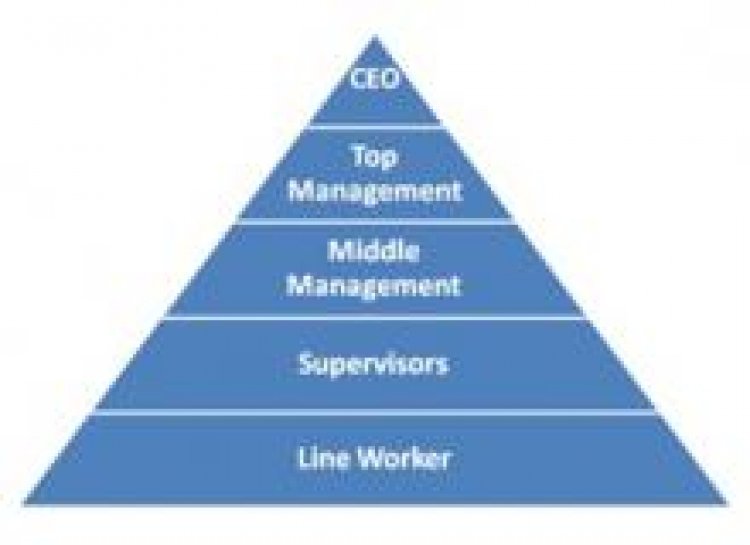The Organizational Pyramid Redefined Part 3
Chris Whipple, author, A.C.T. Now or Fail!

In my past two articles (part 1 & part 2), I introduced a new organization structure that uses the traditional organization pyramid turned on its side. This sideways pyramid can be seen as an arrow pointing toward a target with the leader out in front leading the way. The target or goal that each organization needs to be striving for is long-term sustainability. To accomplish this lofty goal, a list of infrastructure requirements called the Organization Bill of Rights were explained. The basic concept behind these requirements is a leader of any organization has an obligation to look out for the best interest of the organization. These requirements are the foundation needed to ensure efficiency and positive results but more important, when missing from an organization a negative environment is created.

When implemented properly, the requirements listed in the Organization Bill of Rights will help form an organization-wide team capable of achieving more than ever imagined. Alignment throughout the organization is the end result when this process is followed. To obtain this alignment, individual goals need to be created to address each requirement of the Organization Bill of Rights; but more important, personal goals that are important for the employee need to be created and aligned with the needs of the organization.

By aligning individual goals to the goals that are important to the organization, the employee obtains a clear picture of how to achieve personal goals. If the individual focuses on the goals required to implement the Organization Bill of Rights, then the organization will recognize them by satisfying personal goals.
The following illustration depicts what should happen when an individual decides to ignore any requirement in the Organization Bill of Rights.

By missing even one requirement, the potential for long-term sustainability is reduced. The leader must communicate that this is unacceptable behavior and will result in reduced job security, along with limitations on higher pay and promotions. It is a very simple concept. Take care of the organization and the organization will take care of you. This process focuses on people and when people are satisfied, they work harder to keep what they have. Focus on people and money will come. Focus on money and people will go. When people go, efficiencies go down and costs go up.
Leaders have a choice on how to set up their infrastructure. The end result when everyone works together heading toward long-term sustainability is "Partner Satisfaction.”

The most important point is short-term or long-term goals should not be created that go against long-term sustainability. When this occurs and individual goals are the reward for success, alignment dissolves, teamwork is reduced and long-term sustainability is more difficult to achieve.

This illustration depicts how many organizations currently set their goals. Many of the requirements listed in the Organization Bill of Rights would be included, but some would be less important and no emphasis placed on them. This illustration may not look too upsetting at first, but we must consider the fact that every individual would have a set of goals similar to this and the direction each individual is pulling is different throughout the organization. This creates a misalignment of resources, which creates unnecessary competition, reduced teamwork, reduced support, reduced efficiency, additional problems, reduced employee satisfaction, reduced customer satisfaction, reduced sales, reduced profits, and an organization with a questionable future. One point that must be emphasized here is an illusion that is created. An individual who is successful at achieving assigned goals may receive promotions and may increase their pay but job security cannot be guaranteed. Organizations who operate this way are less efficient and have a higher likelihood of laying off people or going out of business. Therefore, job security shouldn't be expected even though it may be promised.
By utilizing the concepts of the sideways pyramid and Organization Bill of Rights, goals become aligned, people become highly motivated, workers enjoy their job, real teams are created, efficiency increases and great results occur which helps to ensure long-term sustainability.
About the Author
 Chris Whipple is the author of A.C.T. Now or Fail!, a book that provides in-depth details on how to implement these concepts and explains why each is so important. With over 20 years of management experience and a desire to share best practices, he set out to document a clear process for implementing goals. His research uncovered several missing details that the quality gurus never discovered. His book fills in the gap. He is a graduate of Johnson & Wales University in business management and can be contacted at www.advancedcorporateteams.com.
Chris Whipple is the author of A.C.T. Now or Fail!, a book that provides in-depth details on how to implement these concepts and explains why each is so important. With over 20 years of management experience and a desire to share best practices, he set out to document a clear process for implementing goals. His research uncovered several missing details that the quality gurus never discovered. His book fills in the gap. He is a graduate of Johnson & Wales University in business management and can be contacted at www.advancedcorporateteams.com.

















